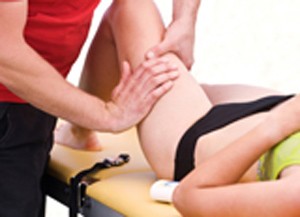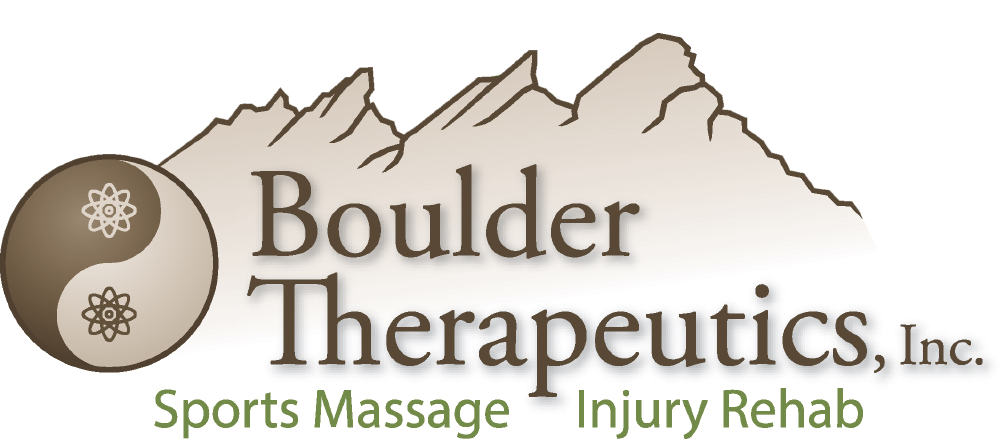Hypermobility & Double-Jointed vs. Hyperflexibility: Understanding the Differences and Implications

Hypermobility of the elbow joint.
Hypermobility refers to the ability of joints to move beyond their normal range of motion, often because ligaments are too loose and your muscles have to take over the job of stabilizing your joints. Sometimes people refer to this as “double-jointed”, while indeed there are no additional joints. Hypermobility can cause significant discomfort, instability, and pain for those who experience it but joint hypermobility is not always a problem, as many people can bend their fingers or twist their limbs without any pain. (Though we don’t recommend doing that too often, keep reading…) However, some individuals experience joint hypermobility as a symptom of a medical condition, such as Ehlers-Danlos syndrome (EDS) or Marfan Syndrome.
While joint hypermobility can be beneficial for activities that require flexibility, such as dancing, gymnastics, or yoga, it can also increase the risk of injury and joint damage. Remember, gymnastics and some forms of dance are done competitively and the focus isn’t always on the health of the athlete. Just because you can move your joint beyond a normal (or healthy) range of motion, doesn’t mean it’s safe for your body.
Hyperflexibility and Joint Instability
Hyperflexibility, on the other hand, refers to the ability of muscles and tendons to stretch beyond their normal range. This can be a problem when it leads to joint instability, as the muscles and tendons that hold the joints together become overstretched and weakened.
Hyperflexibility can be caused by a variety of factors, including genetic predisposition, joint injury, or repetitive strain. It can also be a symptom of certain medical conditions such as EDS or Marfan syndrome, which affects the connective tissues in the body and can cause a range of symptoms including hyperflexibility, joint instability, and heart problems.
Hypermobility and Yoga
Yoga is a popular form of exercise that involves stretching, breathing, and relaxation techniques. Many people with hypermobile joints find that yoga can be beneficial for improving their flexibility and reducing pain. However, it’s important to approach yoga with caution when you have hypermobile joints, as certain poses can put excessive stress on the joints and increase the risk of injury.
For individuals with hypermobile joints, it’s important to avoid over-stretching or pushing the joints beyond their normal range of motion. Instead, it’s better to focus on strengthening the muscles around the joints to provide support and stability. Many yoga instructors are trained to work with individuals with hypermobile joints and can provide modifications or alternative poses that are safer for these individuals.
Hypermobility and Chronic Pain
Hypermobile joints can also contribute to chronic pain conditions such as fibromyalgia and chronic fatigue syndrome. These conditions are characterized by widespread pain, fatigue, and other symptoms that can be debilitating and difficult to manage.
One of the challenges of managing chronic pain in individuals with hypermobile joints is that traditional pain management strategies may not be effective. For example, opioids and other pain medications may not provide adequate relief and can even worsen joint instability. Instead, a multidisciplinary approach that combines physical therapy, cognitive-behavioral therapy, focused therapeutic massage and other modalities may be more effective.

Hypermobility of the wrist and thumb joints as well as hyperflexibility of the connective tissues.
Ehlers-Danlos Syndrome (EDS) and Marfan Syndrome are Connective Tissue Disorders
Both Ehlers-Danlos Syndrome and Marfan Syndrome are two genetic disorders that affect the body’s connective tissue and share some similarities, but they are distinct conditions with their own set of symptoms and diagnostic criteria.
Ehlers-Danlos Syndrome (EDS)
Ehlers-Danlos Syndrome (EDS) is a group of inherited genetic disorders that affect the connective tissues in the body, leading to hypermobility and other symptoms. There are 13 subtypes of EDS, each with its own set of symptoms and diagnostic criteria. However, joint hypermobility is a common feature of many subtypes of EDS, and it can cause significant pain, joint instability, and other complications.
EDS affects the production of collagen, a key component of the body’s connective tissue. This can lead to a range of symptoms, including hypermobility of the joints, skin that is stretchy and easily bruised, and fragile blood vessels that can rupture. EDS has multiple subtypes, each with its own set of symptoms and diagnostic criteria.
Marfan Syndrome
Marfan Syndrome, on the other hand, is a singular genetic disorder that affects the body’s connective tissue, specifically the protein fibrillin. This can cause a range of symptoms, including a tall and thin body type, long limbs, scoliosis, and heart problems. Marfan Syndrome can also cause complications in other parts of the body, such as the eyes and lungs.
The Differences between Ehlers-Danlos Syndrome (EDS) and Marfan Syndrome
EDS has multiple subtypes with varying symptoms and diagnostic criteria, while Marfan Syndrome is a singular condition with specific diagnostic criteria. A key difference between the two conditions is the type of tissue that is affected. While both EDS and Marfan Syndrome affect the body’s connective tissue, EDS specifically affects collagen production, while Marfan Syndrome affects fibrillin.
Another difference is the range of symptoms and severity of each condition. EDS can present in a variety of ways, with symptoms ranging from mild to severe. Some people with EDS may only experience hypermobility of the joints, while others may have more severe symptoms such as joint dislocations, chronic pain, and organ rupture. Marfan Syndrome, on the other hand, is characterized by a tall and thin body type, often with more severe complications such as heart problems.
It is important for individuals who suspect they may have one of these conditions to seek a proper diagnosis and treatment plan from a medical professional.
What’s the difference between Hypermobility and Hypomobility?
Hypomobility and hypermobility are two terms that are used to describe the range of motion of joints in the body. While both terms describe issues related to joint mobility, they refer to opposite ends of the spectrum.
Hypomobility refers to joints that have limited or restricted movement, while hypermobility refers to joints that are able to move beyond their normal range of motion.
Hypomobility can be caused by a variety of factors, including injury, arthritis, or surgery. When joints are hypomobile, they can become stiff, painful, and difficult to move, which can impact a person’s ability to perform daily activities. Hypomobility can also lead to muscle weakness and atrophy, which can further exacerbate joint stiffness and pain. And sometimes joint range of motion is limited because of overly tight muscles or fascia or as a post-operative symptom.
It’s important to note that not all joint hypermobility or hypomobility is problematic. Many people have natural variations in joint mobility without any negative effects. However, when joint mobility is extreme, it can lead to pain, discomfort, and other complications.
Managing Joint Hypermobility, Hypomobility and Hyperflexibility
If you experience joint hypermobility, hypomobility or hyperflexibility, and it’s causing discomfort, it’s important to work with a healthcare provider to develop an individualized treatment plan that addresses the underlying causes and reduces pain. This may include a combination of massage therapy, physical therapy, exercise, and other modalities depending on the specific condition and severity of symptoms.
It’s also important to avoid activities or movements that exacerbate joint hypermobility or hyperflexibility. This may include high-impact activities such as running or jumping, or certain yoga poses that put excessive stress on the joints. Do your best to stay within safe or “normal” joint ranges of motion because your body won’t always warn you that you’re doing damage right away, so you can’t always rely on pain being your guide. Remember, there is cartilage in your joints and moving joints excessively could be slowly wearing out your joints.
In some cases, assistive devices such as braces or orthotics may be necessary to provide additional support to the joints and reduce the risk of injury but it’s ideal if you can support your overly-mobile joints with lighter, neurologically-based strength training.
Another important aspect of managing joint hypermobility, hypomobility and hyperflexibility is maintaining a healthy lifestyle. This includes getting regular exercise, eating a balanced diet, and getting adequate sleep. It’s also important to manage stress levels, as stress can exacerbate pain and other symptoms.

Massage Therapy Can Help Joint Hypermobility and Muscle Hyperflexibility
While there is no cure for joint hypermobility, there are a variety of treatments that can help manage symptoms and improve quality of life. One such treatment is massage therapy, which can be effective in reducing muscle tension, improving joint stability, and increasing range of motion, as long as the practitioner avoids elongating overly-flexible tissue and over-stretching joints.
Massage therapy is a form of manual therapy that involves manipulating soft tissues and muscles to promote relaxation, relieve pain, and improve the quality of your joint’s range of motion. Massage therapy can be an effective treatment for hypermobility because it helps to reduce muscle tension, which is a symptom, and can improve joint stability. It can also help activate, or “turn on” your muscles so they work properly to protect your joint and soft-tissue.
Reducing Muscle Tension
When joints are hypermobile, they can become unstable and prone to injury. This instability can lead to compensatory muscle tension as the body tries to protect the affected joints. Over time, this tension can lead to muscle imbalances and trigger points, which can further exacerbate pain and discomfort.
Massage therapy can help to reduce muscle tension by releasing trigger points and promoting relaxation. By targeting specific muscles and soft tissues, massage therapists can help to alleviate pain and discomfort caused by hypermobility. This can improve joint stability and reduce the risk of injury.
Improving Joint Stability
Joint stability is essential for maintaining proper alignment and preventing injury. When joints are hypermobile, they can become unstable and prone to injury. Massage therapy can help to improve joint stability by reducing muscle tension and promoting proper alignment.
Massage therapists can use a variety of techniques to improve joint stability, including deep tissue massage, myofascial release, and neuromuscular therapy. These techniques can help to release tight muscles, reduce inflammation, and improve joint mobility, which can improve joint stability and reduce the risk of injury.
Increasing the Quality of Your Range of Motion
Another benefit of massage therapy for hypermobility is that it can help to improve range of motion or the quality of that range of motion, without moving beyond your normal ranges. Joint hypermobility can cause joint stiffness and restricted mobility, which can impact a person’s ability to perform daily activities. Massage therapy can help to improve range of motion by reducing muscle tension and promoting joint mobility.
Massage therapists can use techniques such as active and passive stretching and joint mobilization to improve joint mobility. By improving joint mobility, massage therapy can help individuals with hypermobility to move more easily, and in the correct way, and perform daily activities with less pain and discomfort.
Effective Soft-Tissue and Massage Therapy Techniques for Hypermobility and Hyperflexibility.
There are several techniques that massage therapists use to treat hypermobility and hyperflexibility, including myofascial release, trigger point therapy, and neuromuscular therapy.
Myofascial Release
Myofascial Release is a technique that involves applying sustained pressure to the connective tissue that surrounds muscles (the fascia) to release tension and improve mobility. This can be particularly effective for treating areas that have protected overly mobile joints or areas of compensation.
Trigger Point Therapy
Trigger Point Therapy is another technique that is commonly used to treat these conditions. This technique involves applying pressure to specific points in the muscles (known as trigger points) to release tension and alleviate pain. Targeting trigger points in the affected areas or the opposing muscle groups can help to reduce pain and improve overall mobility.
Neuromuscular Therapy
Neuromuscular Therapy is a type of massage that focuses on the relationship between the nervous system and the muscles. By applying pressure to specific areas of the body, and encouraging active engagement of the muscles surrounding the affected joint, massage therapists can help the nervous system “communicate” with the muscles and improve overall function. This can be particularly effective for treating hypermobility and hyperflexibility
Hypermobility vs. Hyperflexibility vs. Hypermobility: What To Do?
Hypermobility and hyperflexibility are two terms that are often used interchangeably to describe the ability to move joints beyond their normal range of motion. While these terms may seem similar, they have distinct differences and implications for individuals who experience discomfort from them. Hypomobility can cause an entirely different set of symptoms, from muscular and joint compensation to increased stress on specific muscles, tendons, ligaments and fascia.
If you experience joint hypermobility, hypomobility or hyperflexibility, it’s important to work with your healthcare provider to develop an individualized treatment plan that addresses the underlying causes and reduces pain and discomfort. Speak with a skilled massage therapist, physical therapist, personal trainer or other medical practitioner to improve your joint stability and reduce pain. And do your best to avoid activities which might exacerbate your pain. By taking a proactive approach to managing joint and soft-tissue instability, you can reduce the risk of injury and improve your quality of life.
 About the Author: David is the founder of Boulder Therapeutics, Inc, and has been treating athletes and injured clients since 1999. He is passionate about educating people on massage therapy, injury rehab & injury prevention, sports performance and stretching. He has a special interest in hypermobility as he taught hundreds of yoga students and teachers to avoid over-stretching in his “Yoga Anatomy” classes. David also has family members who have Ehler’s Danlos Syndrome and have had painful symptoms.
About the Author: David is the founder of Boulder Therapeutics, Inc, and has been treating athletes and injured clients since 1999. He is passionate about educating people on massage therapy, injury rehab & injury prevention, sports performance and stretching. He has a special interest in hypermobility as he taught hundreds of yoga students and teachers to avoid over-stretching in his “Yoga Anatomy” classes. David also has family members who have Ehler’s Danlos Syndrome and have had painful symptoms.
